Enjoy the taste of summer in Japan! What do the Japanese like to eat during the summer season? We introduce 40 classic summer foods, including summer vegetables and fruits that come into season, and desserts indicative of summer in Japan.
Table of Contents
- Popular Japanese Summer Food
- Japanese Summer Fruits and Vegetables
- Japanese Summer Desserts to Cool You Down
Popular Japanese Summer Food
During summer in Japan, many cold dishes that provide relief from the heat become popular. Some of these dishes are summer-limited, so people look forward to their reappearance in shops and restaurants.
Below, we introduce cold dishes that are popular as summer food in Japan.
1. 冷や汁 / hiyajiru / cold soup

Source: 農林水産省Webサイト (https://www.maff.go.jp/j/keikaku/syokubunka/k_ryouri/search_menu/menu/hiyajiru_miyazaki.html)
Hiyajiru is made by combining dashi, miso, and other ingredients. There is a misunderstanding that it is simply “cold miso soup”. However, hiyajiru contains many more ingredients compared to miso soup in order to make it nutritious for summer.
Hiyajiru is a regional cuisine in Miyagi, Mie, Yamanashi, and other prefectures. Though having the same name, each prefecture adds their own regional twist to the dish. For example, Miyagi’s Hiyajirushi is characterised by having cucumbers, Japanese ginger, and fish as essential ingredients.
2. 冷やし中華 / hiyashi chuka

Hiyashi Chuka is a popular Japanese dish enjoyed during the summer months. It consists of chilled Chinese noodles topped with a variety of colourful ingredients - thinly sliced cucumbers, ham, and shredded egg. Other common toppings include shredded chicken, tomato slices, cooked shrimp, bean sprouts, ginger, etc. As you can see, it is a very flexible dish. The colours are said to whet one’s appetite. Hiyashi Chuka typically has a soy sauce-based dressing or sesame dressing.
3. 冷奴 / hiyayakko / cold tofu

Hiyayakko is a simple appetiser or side dish of chilled tofu topped with condiments and few ingredients. The most basic hiyayakko is soy sauce and sliced green onions. There are a wide range of recipes that use okra, sesame seeds, grated ginger, bonito flakes, sliced chicken, natto, seaweed, etc. It is a light and healthy dish that helps cool you down.
4. 冷麵 / reimen

Reimen, aka cold noodles, is a dish that originated from Korea where it is known as “Naengmyeon”. Thin chewy buckwheat noodles are served in a cold broth, and usually in a metal bowl. In Japan, there are many topping arrangements for reimen, some keeping true to the original Korean recipe but with reduced spiciness to suit local taste. It is normally served with gochujang (Korean chili paste). A refreshing cooling dish, it provides a respite from the summer heat.
5. 盛岡冷麵 / Morioka reimen
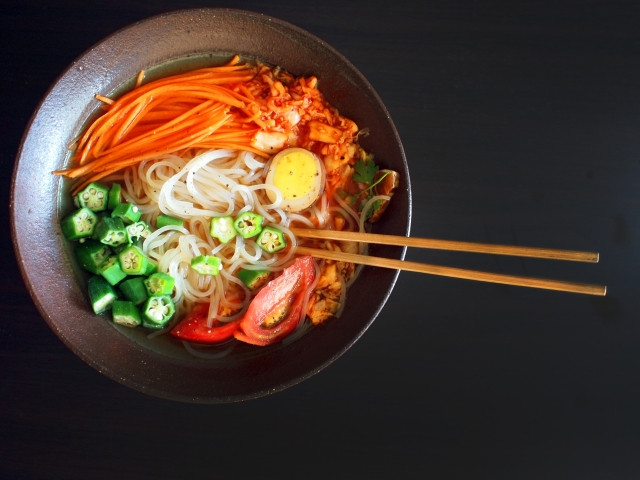
Morioka Reimen is an originally developed dish inspired by reimen. It was developed by a North Korean man in Morioka City, Iwate Prefecture. The difference between Reimen and Morioka Reimen is the noodles, Morioka Reimen’s noodles are made from wheat. Morioka Reimen is typically served with spicy kimchi. It is one of Morioka’s Three Great Noodles (モリオカ三大面) alongside Wanko Soba and Jajamen.
6. 冷しゃぶ / reishabu / cold shabu-shabu
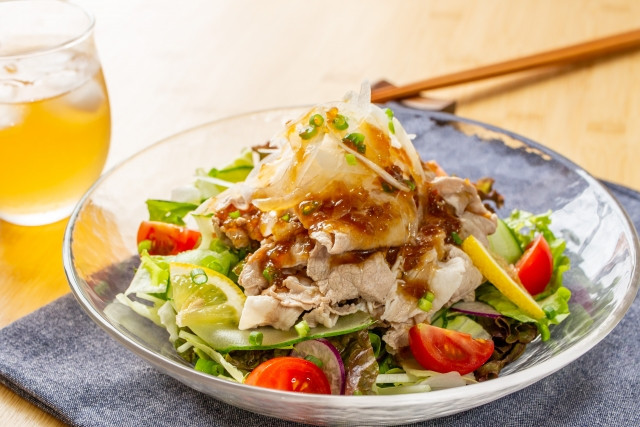
Reishabu is the cold version of the hot pot shabu-shabu dish. しゃぶしゃぶ (shabu shabu) is a Japanese onomatopoeia word for the “swish swish” sound made when stirring the ingredients in the pot. For shabu-shabu, ingredients are cooked in a hot pot, then dipped into sauce and eaten hot. For reishabu, after the ingredients are cooked, they are chilled in iced cold water before eating.
7. そうめん / soumen ・ 流しそうめん / nagashi soumen
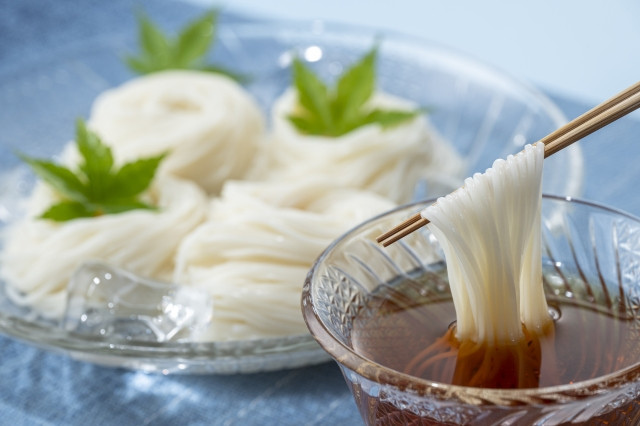
Soumen is a very thin Japanese noodle made from wheat flour. It is available year round but is especially enjoyed in summer as its light and refreshing nature makes it easy to eat on hot summer days when appetite is lacking. The thin noodles cook fast so it is easy to prepare. After boiling briefly, they are rinsed in cold water to cool down. Served on a bamboo tray or a shallow dish with ice to keep cool, they are eaten dipped into tsuyu (つゆ).
Soumen is the 2nd most popular Japanese summer dish in Japan, according to a survey by みんなのランキング.

A fun way to eat soumen is Nagashi Soumen. 流し (nagashi) meaning flow; cooked soumen is flown down long bamboo chutes filled with running water. A chance to show off your chopstick skills - diners use chopsticks to catch the noodles as they flow past. In their free non-chopstick-holding hand, they hold a bowl of tsuyu to dip the caught noodles into, and slurp them up.
8. すだちうどん / sudachi udon

Sudachi Udon is a Japanese noodle dish that features udon noodles served with slices of sudachi, a small citrus fruit native to Japan. Sudachi is similar to lime - tangy, refreshing, and perfect for summer. The dish can be served either hot or cold. Additional toppings may be included such as sliced green onions, tempura, or oroshi (grated daikon).
9. つけ麵 / tsukemen
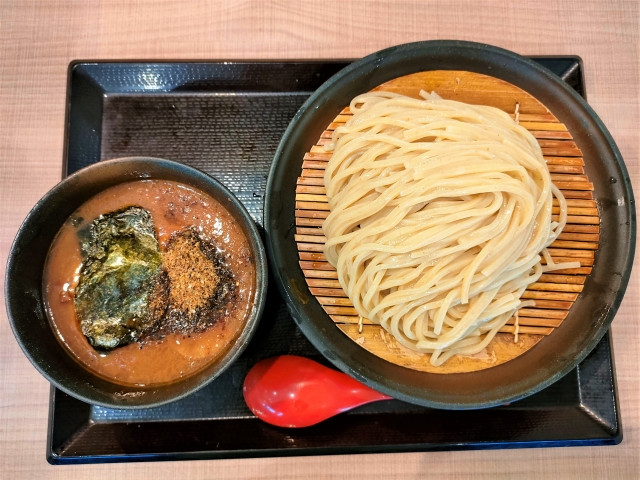
Tsukemen is basically ramen but with the noodles and broth served separately in different bowls. The noodles, typically cold, are dipped into hot broth and eaten. The broth for tsukemen is thicker than ramen so it can coat the noodles better. It is also more intense in flavour than ramen broth as the noodles, which are served separately, do not get to soak up the flavours. After finishing the noodles, the remaining broth is diluted with hot water or light dashi and drank. Ramen is perfect for cold seasons, while tsukemen is best in hot seasons.
10. ざるそば / zaru soba ・ざるうどん / zaru udon
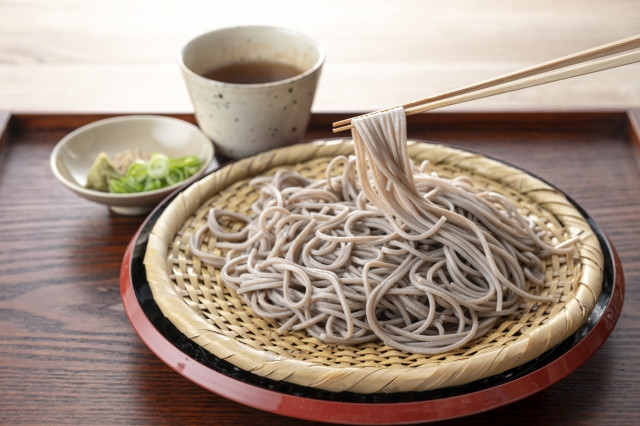
Zaru Soba is a classic traditional Japanese noodle dish that features chilled soba noodles served on a bamboo strainer tray called Zaru. The noodles are eaten with a dipping sauce called Tsuyu, the same Tsuyu for soumen. Wasabi, shredded seaweed, and sliced green onions are common toppings for zaru soba, while tempura is a popular side dish accompaniment. Tempura with zaru soba is known as Tenzaru Soba. Zaru Udon is basically the same dish but uses udon noodles instead of soba.
11. 鮎 (あゆ) / ayu
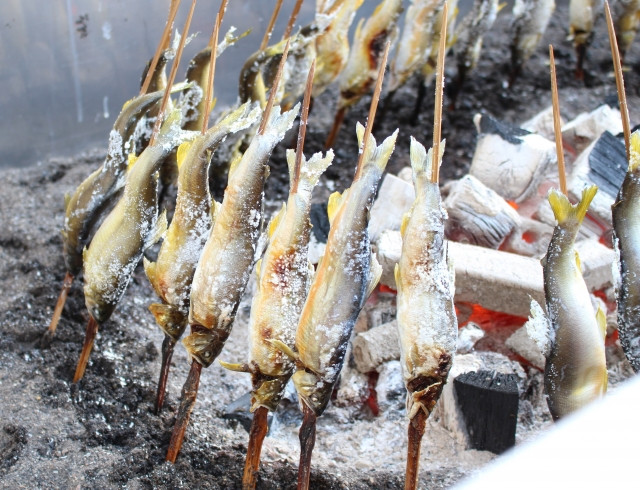
Ayu, also known as sweetfish, is a Japanese freshwater fish. It has a delicate and sweet flavour. Ayu is normally prepared in a simple manner, such as grilling, to preserve its natural sweetness. Grilled ayu, cooked over charcoal fire, is lightly seasoned with salt and served with a slice of lemon wedge and/or oroshi (grated daikon). The peak season for ayu is summer when they become abundant and are at their sweetest.
12. ホルモン焼き / horumon-yaki / fried offal

Organ meats of animals are commonly eaten in Japan. Horumon-yaki is fried offal, a popular dish that originated from Osaka and spread across Japan. The offal is thinly sliced, seasoned, and grilled over an open flame. Horumon are also commonly available in Yakiniku restaurants. Horumon-yaki is popular in summer because of its nutritiousness that is said to restore lethargy and energy loss caused by summer fatigue.
13. 夏野菜カレー / natsuyasai-karee / summer vegetables curry
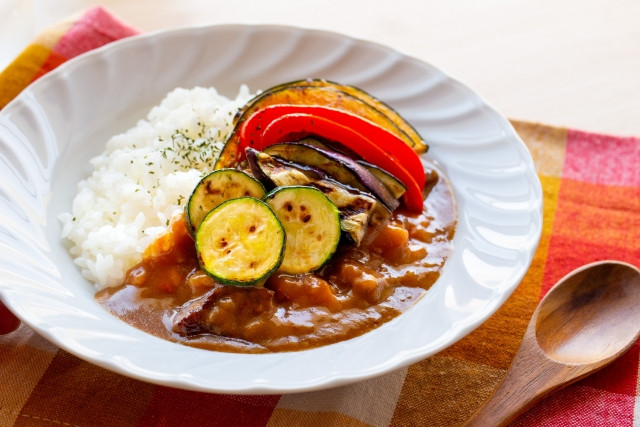
Natsuyasai-karee, aka “summer vegetables curry”, is curry cooked with summer vegetables. There are many vegetables that come into season during summer in Japan, and this dish incorporates the freshest harvest of the season. Summer vegetables include tomatoes, eggplant, zucchini, bell peppers, corn, and more. This colourful summer vegetables curry dish is filled with sweetness and flavour, and not to mention nutritious.
14. レバニラ炒め / reba-nira-itame / stir-fry liver and chives
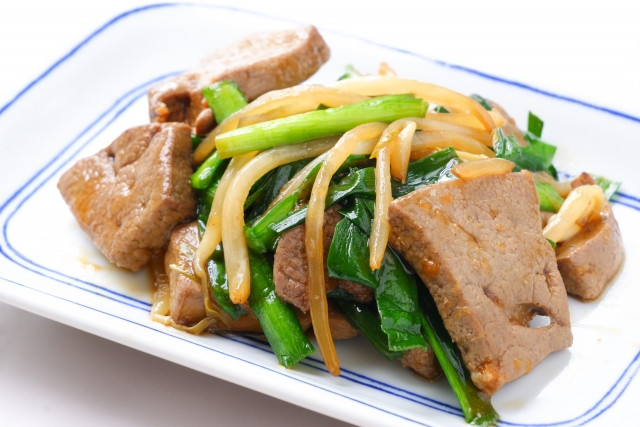
Another popular organ meat dish in Japan, stir-fry liver and chives are also favoured during summer months for recovery of energy. It is commonly served as a main dish to go with rice, or even stand-alone as a beer snack. Reba-Nira-itame is known for its rich and savoury taste that combines the tenderness of liver and the fragrance of leeks.
15. たこ焼き / takoyaki / octopus balls
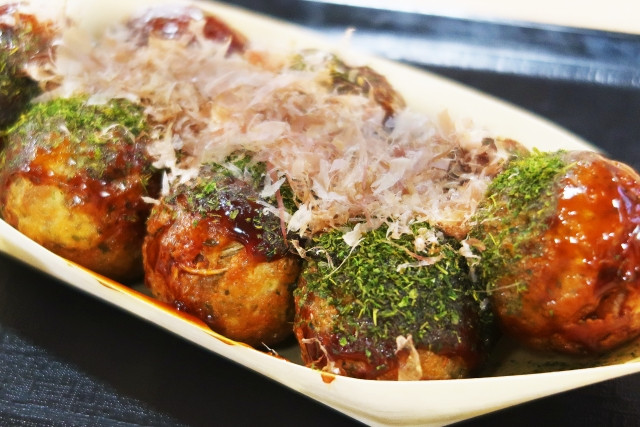
You must be familiar with this one. Takoyaki is a popular Japanese street snack from Osaka. It consists of small round batter balls with a slice of octopus (tako) in its centre, and cooked on a special takoyaki grill. Takoyaki is a classic summer festival, aka 夏祭り (natsumatsuri), snack. Smells good when cooking, delicious when eaten, it is also fun to try making your own. Not just octopus, you can basically put anything inside them - mochi, cheese, kimchi, etc.
16. 鰻 (うなぎ) / unagi / eel
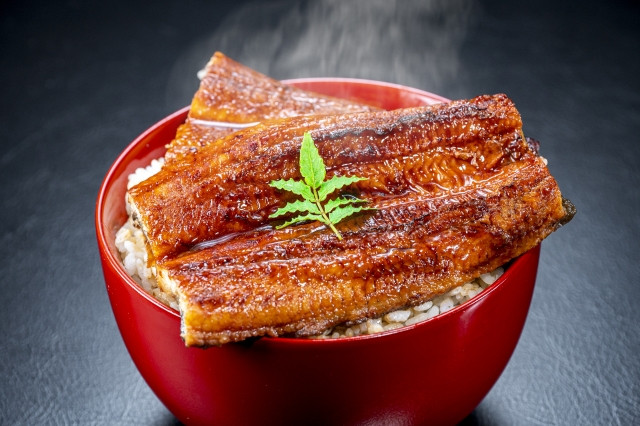
Unagi is freshwater eel and a delicacy in Japan. Difficult to prepare and expensive, it is considered a luxurious dish or meal in Japan. Unagi Kabayaki is the most well-known method of preparing unagi. It is one of the best ways to enjoy unagi and is a traditional method that was passed down since the Edo era, though the cooking style has gone through several changes. Unagi Kabayaki is done by basting the unagi with special sauce whilst flipping the eel over a charcoal fire for even cooking.
In Japan, we eat unagi on 土用の丑の日 (doyou no ushi no hi), or the Midsummer Day of the Ox. Unagi, which is known for its nutritiousness, is good for recovering from summer fatigue.
What other unagi dishes are there? Find out in our unagi special article where we also explain the difference between unagi and anago - they are similar in appearance.
17. 焼肉 / yakiniku / Japanese barbecue ・バーベキュー / barbecue
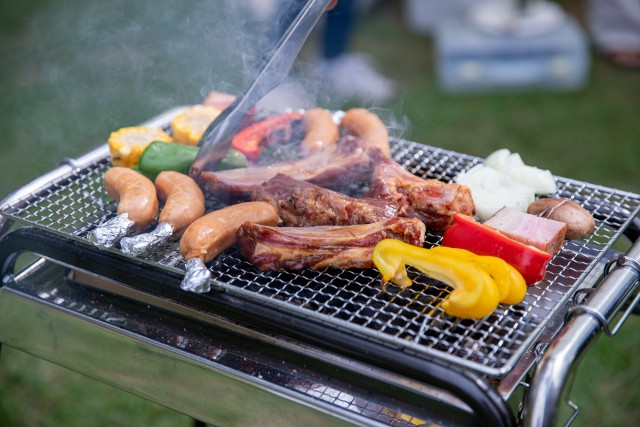
Summer = BBQ !!
When summer comes around, people living in Japan get excited for barbecues and yakiniku. Outdoor barbecue and yakiniku sessions become popular with people crowding parks and places with barbecue facilities. There are also restaurants that offer outdoor seating and barbecue during summer only - rooftop restaurants are a special treat. Beef, pork, sausages, and summer vegetables are barbecued over a charcoal grill. It's great fun as family and friends gather together.
18. 焼きそば / yakisoba / fried noodles
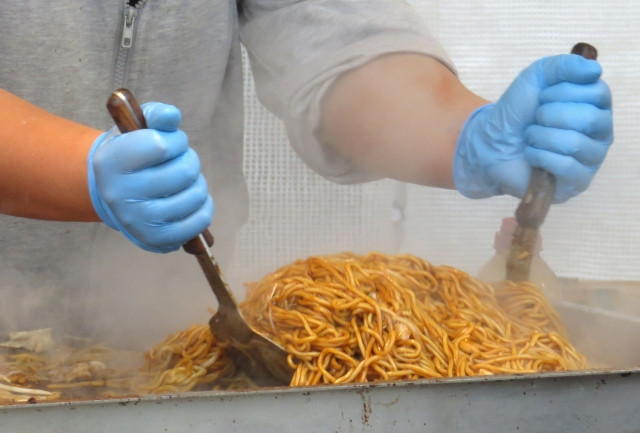
Yakisoba is Japanese fried noodles. Despite the name, soba is not actually used in yakisoba, rather Chinese noodles are used. Yakisoba is another iconic summer festival food alongside takoyaki. Piping hot yakisoba is fried over a hot grill at festival stalls. Festival-goers dressed in yukata and geta can’t resist the hot savoury noodles, and neither can you.
19. ゴーヤチャンプル / goya chanpuru / stir-fry bitter gourd

Source: 農林水産省Webサイト (https://www.maff.go.jp/j/keikaku/syokubunka/k_ryouri/search_menu/menu/47_11_okinawa.html)
Chanpuru is a representative dish of Okinawa that consists of stir-fry island tofu (島豆腐 / shima tofu ; Okinawa tofu) and seasonal vegetables. Among the many chanpuru recipes, goya chanpuru (with bitter gourd as the seasonal vegetable) is the most popular, becoming widespread nationwide as a restaurant dish and also home cooked dish.
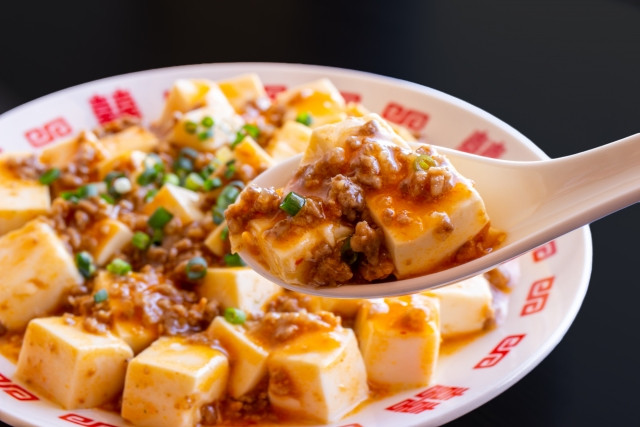
Aside from the above mentioned, spicy food also holds a special place in Japan during summer. There’s just something irresistible about spice when it’s hot out. It makes you sweat which makes you cool down, perhaps? Curry, soup curry, tan tan ramen, mazesoba, mapo tofu, and other spicy foods are also enjoyed during Japanese summers.
Writer's Pick
Japanese Summer Fruits and Vegetables
People love to rave about Japan’s four seasons. A perk of having four seasons also means seasonal fruits and vegetables. Without further ado, here are some summer fruits and vegetables to try in Japan during the hottest months.
20. 杏 (あんず) / anzu / apricot
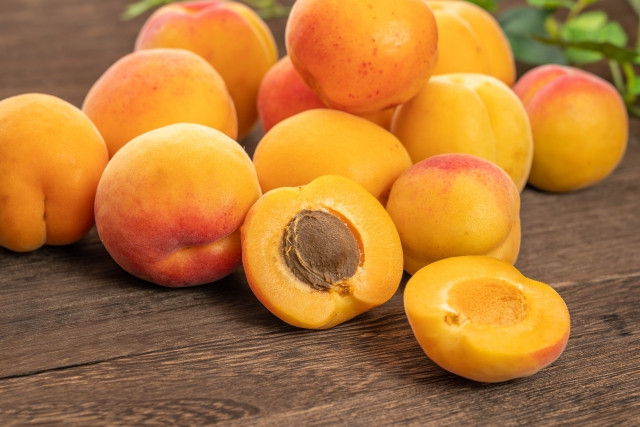
Apricots thrive in the same climate as apples, therefore they are cultivated in the same regions as apples. Namely, the Tohoku and Kitariku regions. The area with the highest production of apricots in Japan is Aomori prefecture, followed by Nagano prefecture. Around 98% of apricots in Japan come from these 2 prefectures (※).
Peak Season : late June to mid July
※ FoodsLink, “あんず” ※ KudamonoNavi, “あんず”
21. バナナ / banana

Bananas are a common sight in Japanese supermarkets and konbini. 100 yen stores even sell banana cases (why?). Bananas are highly recommended for summer as they contain potassium which we lose when sweating. They also contain other vitamins that help us regulate our body temperature and improve body water absorption rate, which are important to prevent heatstroke. Most of the bananas in Japan are imported from the Philippines.
Peak Season : June to September
22. マンゴー / mango

Local Japanese mango include Miyazaki Prefecture’s「太陽のタマゴ 」(taiyou no tamago) - “Egg of the Sun” and Kagoshima Prefecture’s「夏姫」(natsu hime) - “Summer Princess”. Taiyou no Tamago, or Miyazaki Mango, in particular, is very expensive. The best mangoes are sold at auctions, and can cost over 200,000 yen for a single fruit. Okinawa and Miyagi are the largest producers of mango in Japan.
Peak Season : May to August
23. メロン / melon
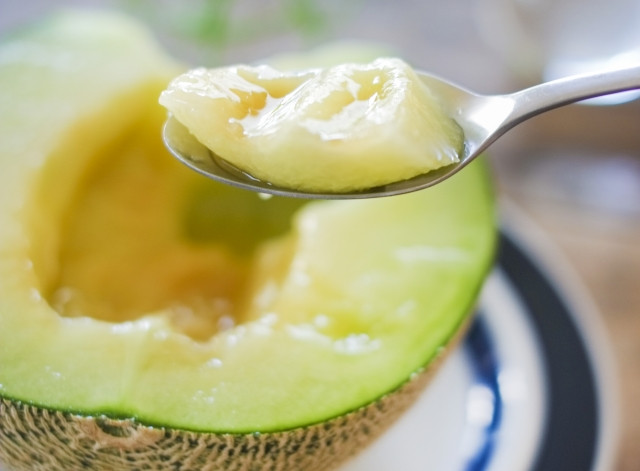
Japan is renowned for having high quality and flavourful melons. They have a high-class image, and are considered a luxurious gift to give to someone. Famous melons in Japan include the Hokkaido Yubari Melon and Shizuoka Crown Melon. Hokkaido, in particular, is known for producing melons with many people visiting morning markets to sample melons.
Peak Season : May to July
24. もも / momo / peach
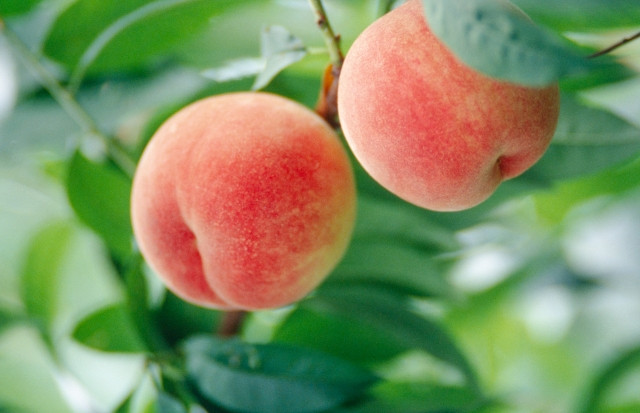
There are many local varieties of peach in Japan. Chilled peaches are wonderful to have during summer. However, if over-chilled, the taste will become dull. For the best chilled peaches, it is recommended to refrigerate them for 1~2 hours before eating, and no longer. Or, if short on time, soak them in ice water for 10 minutes.
Peak Season : July to September
25. パインアップル / pineapple
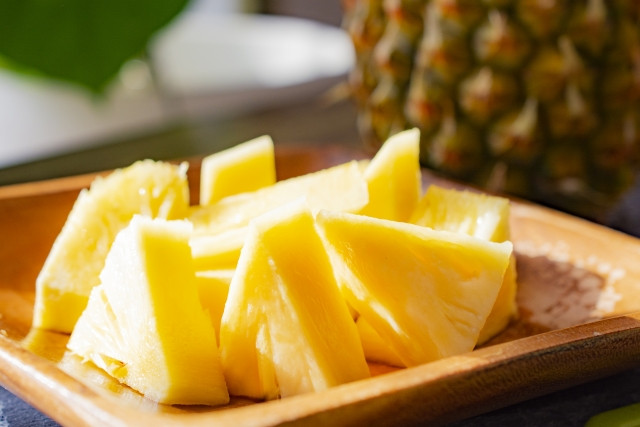
In Japan, pineapples are primarily cultivated in Okinawa, which has a subtropical climate. Other tropical fruits to enjoy in Okinawa are mango, banana, dragon fruit, star fruit and shikuwasa. Most of the pineapples in Japan are imported from the Philippines. Pineapple is a popular summer fruit in Japan. Recently, a new summer drink “Salty Pineapple” has made an appearance in stores.
Peak Season : April to August
26. シークワーサー / shikuwasa
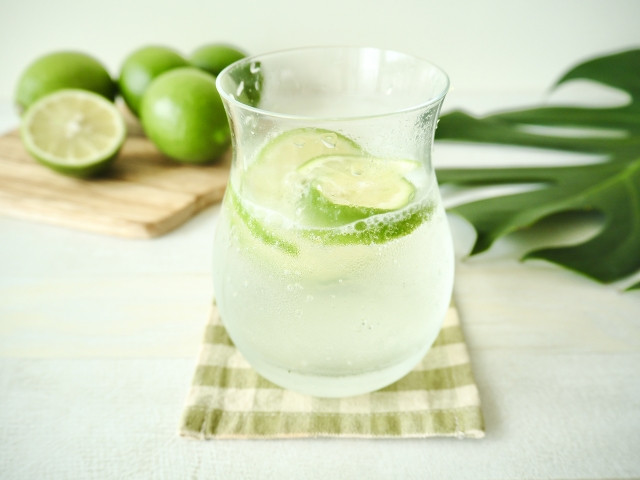
Shikuwasa is a citrus fruit native to the Okinawa region of Japan and Taiwan. In the Okinawan dialect, “shi (シー)” means sour thing and “kwasa (クヮーサー)” means food, so shikuwasa basically means “sour food”. Shikuwasa have 3 harvest periods - when green, when close to ripe, when ripe. Each stage has its own usages. Shikuwasa can be enjoyed as a refreshing juice, eaten raw when ripe and yellow in colour, or for seasoning in recipes. Try a refreshing glass of shikuwasa juice when visiting Okinawa.
Peak Season : late August to September
27. シャインマスカット / shine muscat
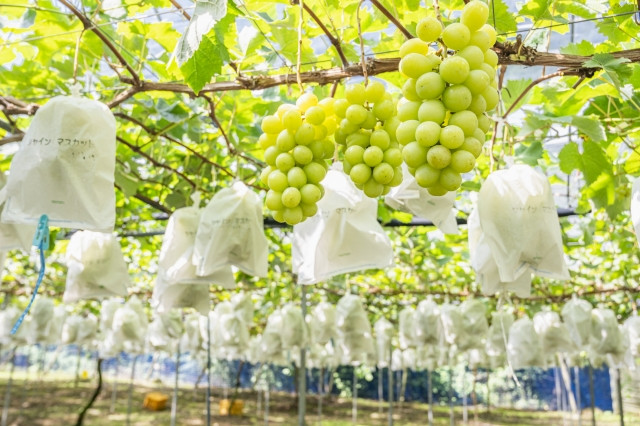
Shine Muscat is a species of grape made by crossbreeding Akitsu-21 (安芸津21号) and Hakunan (白南) grapes. They were made by the National Institute of Fruit Tree Science (NIFTS) and registered as a species in 2006. The fruit's skin is a yellowish green colour with each grape weighing around 10~15 grams. The best thing about Shine Muscat is that they are seedless! They have a nice bite to them too!
Peak Season : July to December
28. スイカ / suika / watermelon
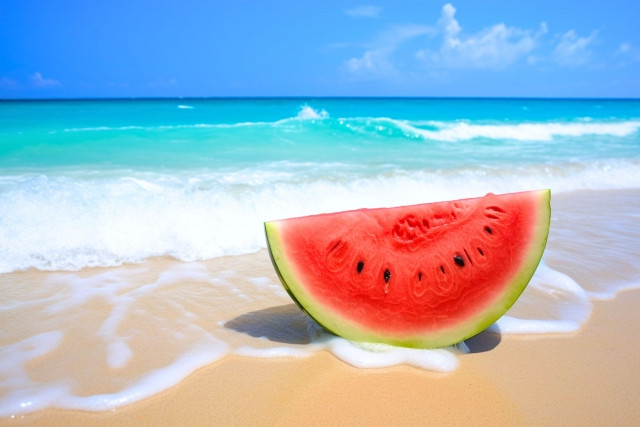
Japanese watermelons also have a “high-class” image. You may have heard or seen photos of square watermelons from Japan. These are actually inedible as they are harvested before ripening in order to retain their shape, and are purely for ornamental purposes. There are many varieties of watermelon in Japan, some incredibly big and some small enough to fit in your palm. A classic summer game in Japan is スイカ割り (suikawari) - splitting watermelon with a stick while blindfolded.
Peak Season : May to August
Watermelon is the 3rd most popular summer dish in Japan, according to a survey by みんなのランキング.
29. きゅうり / kyuuri / cucumber
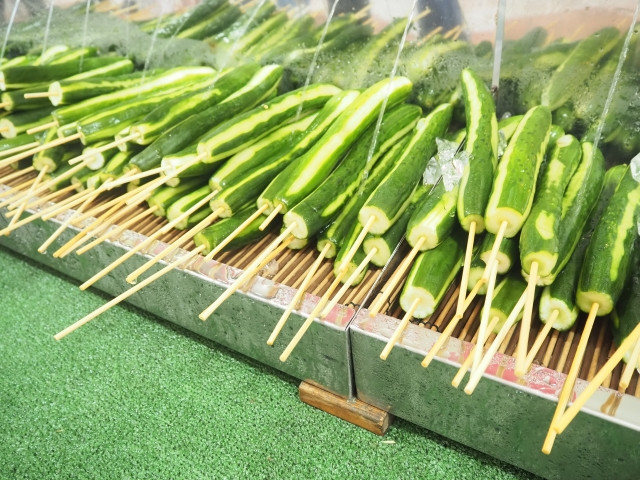
Cucumbers are the perfect vegetable to beat the summer heat. There are many Japanese cold side dishes that utilise cucumbers, as well as whole cucumber snacks. For example, 「酢の物 」(sunomono) that literally translates to “something vinegar” is a pickled cucumber salad. Another popular cucumber snack is「きゅうりの一本漬け」(kyuuri no ihonzuke) which is a stick of whole pickled cucumber, that is also frequently seen at matsuri.
30. 茄子 (なす) / nasu / eggplant

Cold or spicy eggplant dishes are not to be missed in Japanese summers. Mapo Nasu (麻婆茄子) is a variation dish of Mapo Tofu where the tofu is switched out with eggplant. The subtle spice and added miso flavour goes very well with eggplant. It is very easy to prepare with sauce packets sold in supermarkets. There are also chilled eggplant side dishes to complement your meals.
31. とうもろこし / toumorokoshi / corn
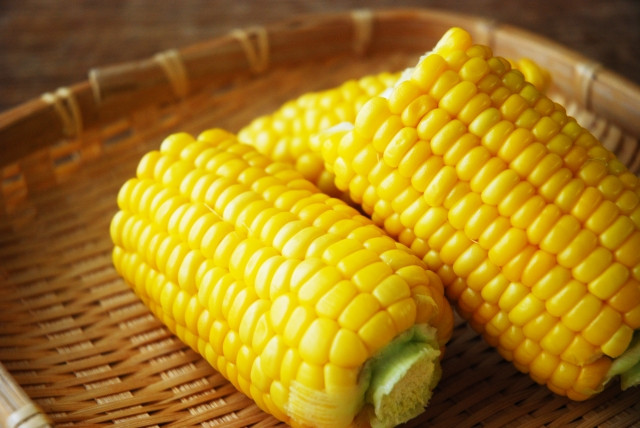
If you’re barbecuing, don’t miss out on grilled corn. During summer, supermarkets have a large supply of corn for cheap. Steamed corn is easy to prepare if you have a microwave oven. Just wet the corn, wrap it in a wet kitchen towel, and heat in 5 minute increments at 500W. Grilled corn on the cob are a common sight at festivals too. And of course, buttered corn is a classic to have.
Japanese Summer Desserts to Cool You Down
Japanese summer desserts are characterised by their refreshing and cooling properties. Cold desserts are of course nice and cool for summer, but there are also desserts that look cool from their translucent appearance - helps you feel cool just by looking at them. Some of these desserts are only offered for a limited time during summers so take the opportunity to try them!
32. あんみつ / anmitsu
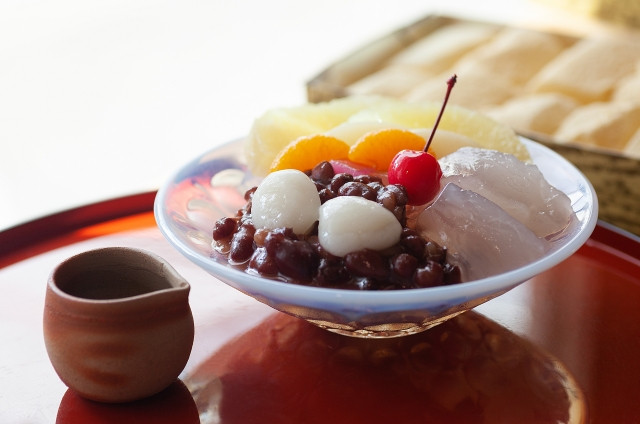
Anmitsu is a traditional Japanese dessert that is popular during the summer months. It is a colourful combination of various components - kanten (clear jelly), red bean paste, shiratama (white mochi balls), and fruits, all topped with kuromitsu, a brown sugar sauce.
There are also fancier Anmitsu that deviate from the traditional, including ice cream and even whipped cream.
33. カキ氷 / kakigori
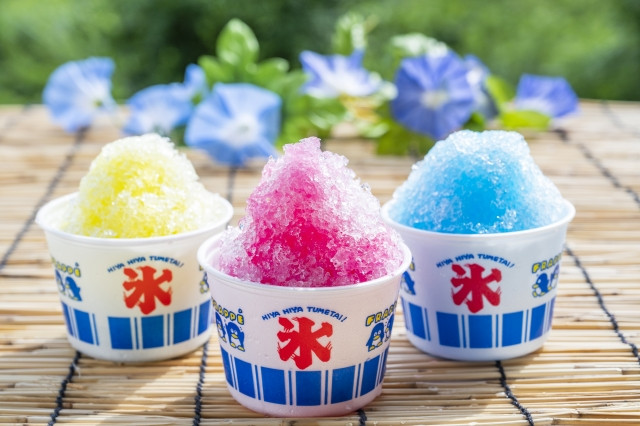
Kakigori is a Japanese shaved ice dessert. The simplest of kakigori is just shaved ice topped with a sweet syrup, such as strawberry, melon, blue Hawaii, lemon, and other flavours. These are commonly available at festivals.
There are also fancier kakigori that are served in cafes and restaurants. These are also topped with syrup, but include other toppings as well, such as a scoop of ice cream, fruit slices, condensed milk, red bean paste, etc. to add to the deliciousness.
Kakigori is the No.1 most popular Japanese summer dish in Japan, according to a survey by みんなのランキング.
34. くず餅 / kuzu-mochi

Kuzumochi is a traditional Japanese wagashi made by mixing kuzu powder with sugar and water to form a jelly agarlike dessert. Kuzu-mochi has a semi transparent appearance which makes it look “cool”, and thus is enjoyed in summer. It is served topped with kinako (roasted soybean flour) and kuromitsu.
35. 水羊羹 / mizu-yokan
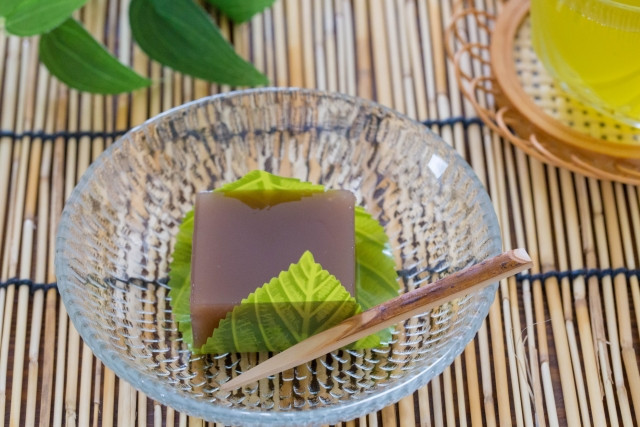
Mizu-yokan is a classic summer Japanese wagashi that fills the shelves of supermarkets in summer. Usually shaped in a rectangular block, it is a firm jelly agarlike dessert. It differs from regular yokan in that it contains higher water content. Mizu-yokan is made from azuki red bean paste, sugar, and kanten (clear jelly).
36. 水信玄餅 / mizu-shingen-mochi / raindrop mochi
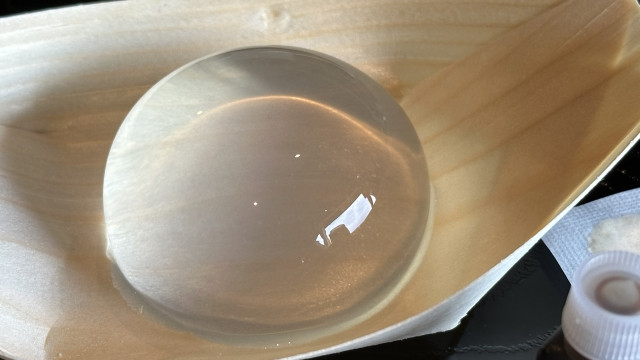
Better known as “raindrop cake”, raindrop mochi is a dessert made by mixing water and agar. The final result is a dessert that resembles a transparent raindrop, thus its English name. The dessert contains no calories and has hardly any taste. It is normally eaten topped with kinako and kuromitsu to give it flavour.
37. ところてん / tokoroten

Tokoroten is a traditional Japanese jelly-like dessert. It is made from ogonori, a type of seaweed extract, which gives it a translucent and gelatinous texture. It may be cut into thin noodle-like strands or served in a large cube form. Depending on the region, tokoroten is prepared differently:
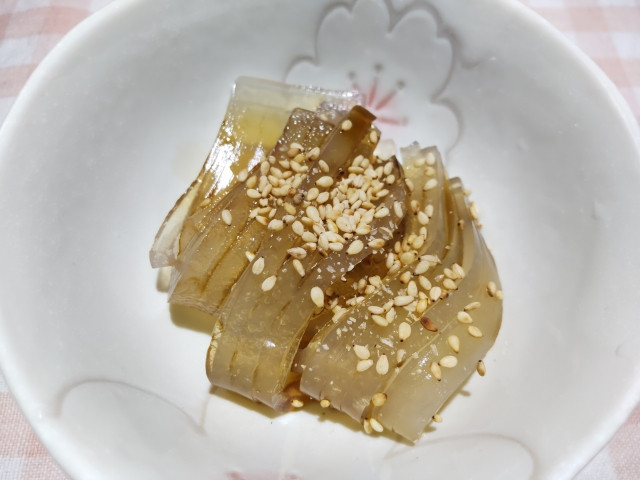
In Kanto, as well as Nagoya and Hiroshima, tokoroten is served savoury style with rice vinegar and soy sauce, aonori (dried powdered seaweed), sesame, or karashi (Japanese mustard. In Kansai, tokoroten is served in a sweet style with toppings like kuromitsu, kinako, green tea powder, or fruit slices.
38. チョコミント / choco-mint
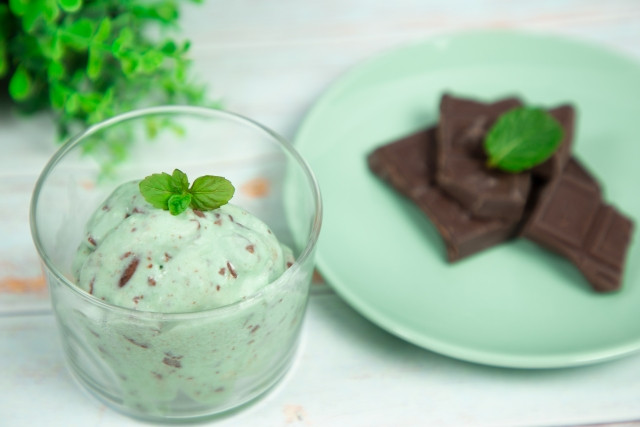
Chocolate mint, known as “choco-mint (choko-minto)” in Japan, is a popular flavour of sweets and desserts in Japan, especially during summers. As midsummer approaches, ice cream and confectionery brands will release limited time (期間限定 kikan-gentei) products featuring chocolate mint. For example, ice cream, cookies, cakes, sandwiches (!!!), and even beverages (!!!).
39. ガリガリ君 / Gari-Gari-kun
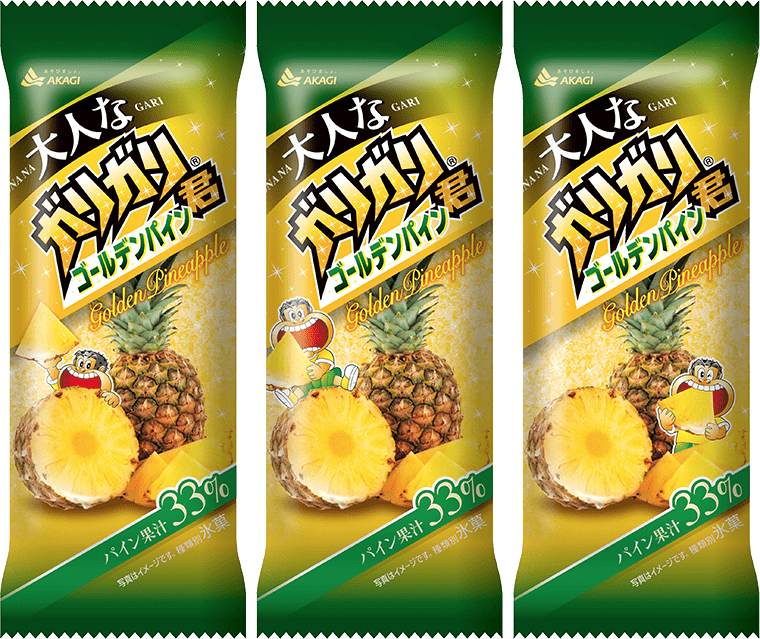
Source : https://www.akagi.com/products/garigari/otonagari_g_pine.html
Gari-Gari-Kun is a popular and cheap Japanese popsicle brand known for its unique and refreshing flavours. These “ice bars” are often enjoyed during the summer months as a refreshing and inexpensive treat to cool down. Gari-Gari-Kun offers a wide variety of flavours, the basic flavour being soda, and even regional specialty flavours. Pineapple and grapefruit sound perfect for summer, don’t you think?
40. パフェ / parfait
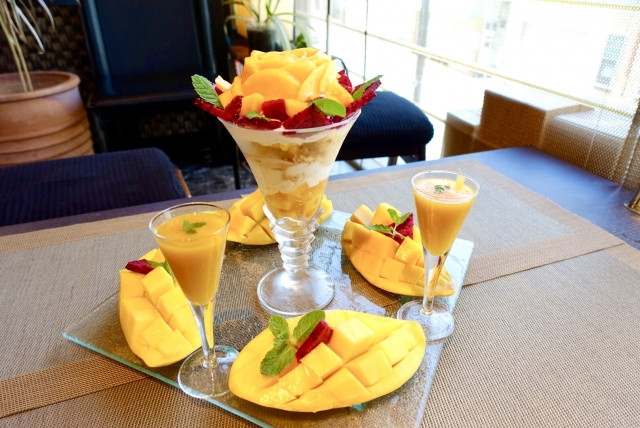
Parfaits are one of the iconic desserts that Japan has to offer. It is a classic dessert offered at family restaurants and kissaten (Japanese-style coffee shops). Served in a tall glass, parfaits contain soft serve ice cream, whipped cream and toppings on top, with layers of ingredients below. Layered ingredients may include cornflakes, sweet sauce (strawberry, chocolate, mango, etc.), jelly, more whipped cream, custard, fruits, etc. While toppings may include drizzled strawberry, chocolate, matcha syrup, or Pocky, wafer biscuit, brownie slice, fruit slices, etc. The combinations are endless.
For summer, parfaits will transform to match the season. Places serving parfaits will utilise summer fruits and offer mango, pineapple, lemon, banana, peach parfaits for a limited time only.



































